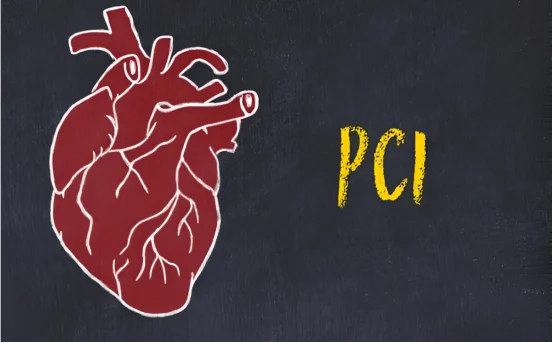Introduction
Our body’s vascular system—comprised of arteries, veins, and capillaries—plays a vital role in transporting blood throughout the body. When these blood vessels become damaged or blocked, it can lead to serious health problems. Fortunately, endovascular surgery, a minimally invasive approach to treating vascular conditions, can offer effective and safe relief.
But how do you know if you need endovascular surgery? The answer often lies in the symptoms your body is showing.
It’s essential to recognize the symptoms indicating the need for endovascular surgery to ensure timely intervention.
Understanding Endovascular Surgery
Endovascular surgery refers to a set of procedures that treat diseases within the blood vessels using catheters, wires, balloons, and stents—all inserted through tiny skin incisions. It’s an advanced alternative to open surgery, offering quicker recovery and fewer complications.
These surgeries are typically used to treat:
- Aneurysms
- Peripheral artery disease (PAD)
- Deep vein thrombosis (DVT)
- Carotid artery disease
- Arteriovenous malformations (AVMs)
- Chronic venous insufficiency
Symptoms Indicating the Need for Endovascular Surgery
Ignoring early symptoms of vascular disease can lead to severe complications like:
- Stroke
- Heart attack
- Limb loss (amputation)
- Aneurysm rupture
- Organ failure
That’s why recognizing warning signs early and getting prompt medical attention can save your life or limbs.
Symptoms That May Indicate the Need for Endovascular Surgery
Here are the most common symptoms that should prompt you to seek medical evaluation and consider endovascular treatment:
Leg Pain While Walking (Claudication)
If you experience cramping or aching pain in your thighs, calves, or buttocks while walking, and it improves with rest, this could be a sign of Peripheral Artery Disease (PAD). PAD occurs when the arteries that supply blood to your limbs become narrowed due to plaque buildup, reducing blood flow. While early stages may be managed with lifestyle changes and medication, persistent or worsening symptoms often require endovascular procedures like angioplasty and stenting to restore circulation and prevent further complications.
Numbness or Tingling in the Limbs
A frequent sensation of pins and needles or numbness in the arms or legs, especially during physical activity, may be caused by reduced blood circulation or nerve damage. These symptoms often appear in individuals with PAD or carotid artery narrowing, where blood flow to the brain and limbs is restricted. Endovascular treatment can help by restoring proper blood flow, which protects nerves and reduces the risk of long-term tissue damage.
Non-Healing Sores or Ulcers on Legs or Feet
If you notice open wounds or ulcers on your legs or feet that fail to heal over several weeks, this is a red flag for severe vascular disease. Poor blood flow due to blocked or narrowed arteries prevents tissues from receiving the oxygen they need to repair themselves. Without intervention, these ulcers can become infected or even progress to gangrene. Angioplasty, stenting, or atherectomy are often performed to improve blood circulation and support healing.
Sudden Vision Loss or Dizziness
Experiencing sudden blindness in one eye, slurred speech, or difficulty balancing can be early warning signs of a transient ischemic attack (TIA) or mini-stroke. These symptoms are typically caused by carotid artery disease, where narrowing of the arteries in the neck reduces blood flow to the brain. If diagnosed early, carotid stenting can be performed to open these arteries, reducing the risk of a future full-blown stroke.
Swelling and Pain in One Leg (Especially Calf or Thigh)
Pain, tenderness, swelling, and warmth in one leg—particularly in the calf or thigh—may indicate Deep Vein Thrombosis (DVT). DVT occurs when a blood clot forms in a deep vein, typically in the legs. If left untreated, the clot can travel to the lungs and cause a pulmonary embolism, a potentially fatal condition. Endovascular interventions such as catheter-directed thrombectomy or thrombolysis may be urgently needed to dissolve or remove the clot.
Bulging or Pulsating Lump in the Abdomen
A noticeable bulge or pulsation in your abdominal area could signal an abdominal aortic aneurysm (AAA). This condition involves the ballooning of the body’s main artery, which can grow silently over time. If the aneurysm becomes too large, it may rupture, causing life-threatening internal bleeding. Endovascular Aneurysm Repair (EVAR) is a minimally invasive technique used to place a stent graft inside the aorta to strengthen the artery wall and prevent rupture.
Varicose Veins with Pain or Skin Changes
Enlarged, twisted veins—typically in the legs—accompanied by itching, burning, swelling, or darkening of the skin, often point to chronic venous insufficiency. This condition arises when vein valves malfunction, causing blood to pool and pressure to build in the legs. While varicose veins might seem like a cosmetic issue at first, worsening symptoms may require venous ablation or embolization procedures. These treatments help close off the faulty veins, improve blood return to the heart, and relieve symptoms.
Chest Pain and Shortness of Breath After Leg Swelling
Sharp chest pain, difficulty breathing, or sudden fatigue—especially following recent leg swelling or DVT symptoms—can indicate a pulmonary embolism (PE). This is a medical emergency in which a blood clot travels from the leg veins to the lungs, obstructing blood flow and reducing oxygen levels. Emergency endovascular procedures, such as clot removal (thrombectomy) or catheter-delivered clot-dissolving medications, are often required to restore normal circulation and save the patient’s life.
Cold Feet or Toes That Appear Pale or Blue
Feet or toes that appear pale, bluish, or are cold to the touch may suggest severe peripheral artery disease or critical limb ischemia, where blood supply to the extremities is significantly reduced. If left untreated, this can result in tissue death and possible amputation. Endovascular treatments, including balloon angioplasty and stenting, can restore blood flow to the affected limbs and help prevent irreversible damage.
Sudden, Severe Headache and Neck Pain
A sudden, intense headache—often described as a “thunderclap” headache—along with neck or back pain, could signal the rupture of a brain aneurysm or cerebral arteriovenous malformation (AVM). These conditions are extremely serious and require immediate intervention. In many cases, endovascular coiling or embolization can be performed to stop the bleeding and prevent further brain damage or death.
When to See a Vascular Specialist
If you experience any of the symptoms above:
- Don’t ignore or delay.
- Schedule a consultation with a vascular surgeon or interventional radiologist.
- Early diagnosis through imaging tests like Doppler ultrasound, CT angiography, or MR angiography can detect problems before they become critical.
Benefits of Endovascular Surgery
When symptoms are caught early and treated with endovascular surgery:
- You can avoid major open surgery.
- Recovery is faster.
- The risk of complications is lower.
- Most procedures are done on an outpatient basis.
- You can return to your normal life sooner.
Conclusion
Our body often gives warning signs before a vascular problem turns into a serious condition. If you notice symptoms like leg pain while walking, non-healing wounds, swelling, dizziness, or visible bulges, don’t ignore them.
Endovascular surgery offers a minimally invasive solution to many of these vascular problems—ensuring safety, faster healing, and excellent long-term results. The key lies in recognizing the symptoms early and seeking expert medical care.























